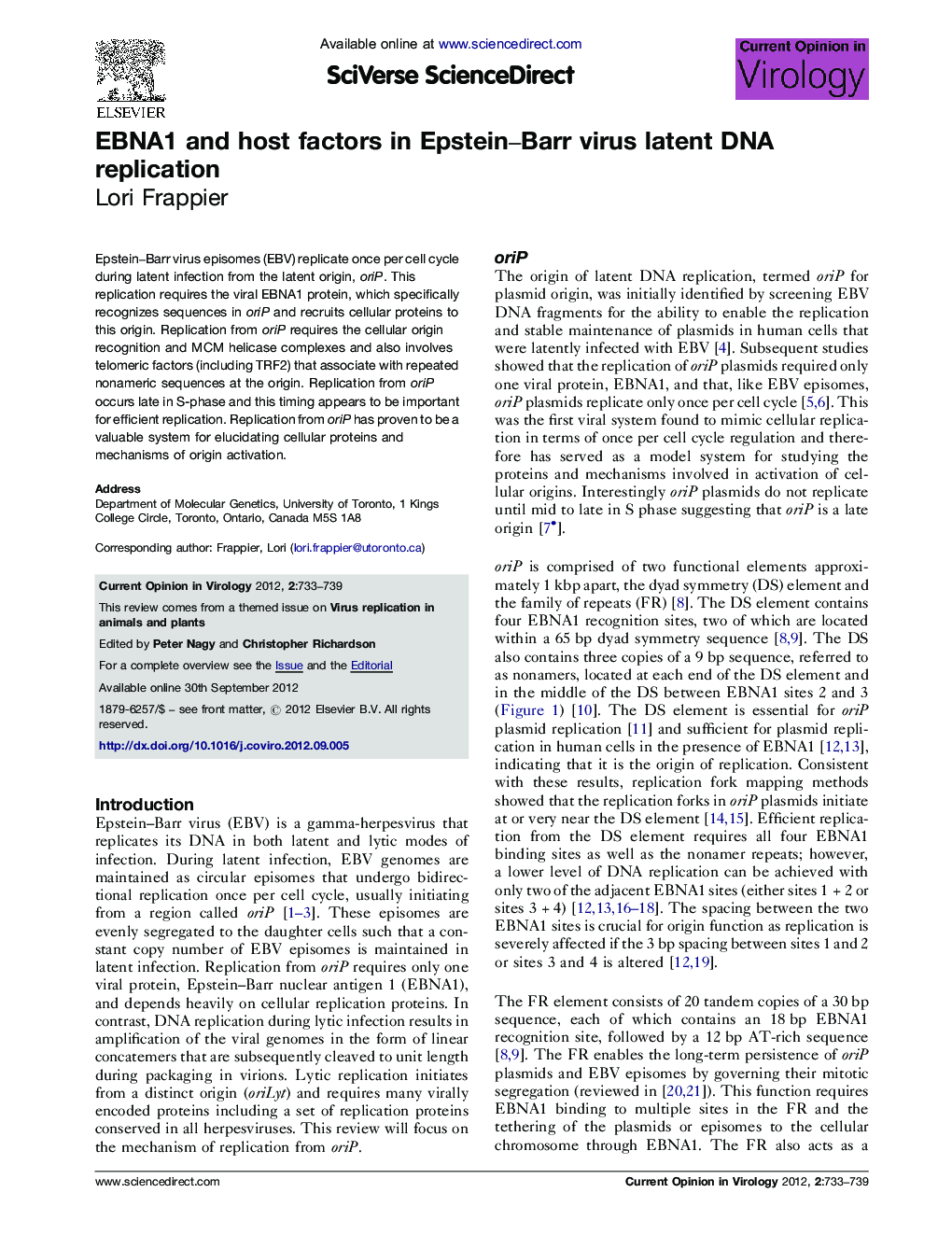| Article ID | Journal | Published Year | Pages | File Type |
|---|---|---|---|---|
| 2473504 | Current Opinion in Virology | 2012 | 7 Pages |
Epstein–Barr virus episomes (EBV) replicate once per cell cycle during latent infection from the latent origin, oriP. This replication requires the viral EBNA1 protein, which specifically recognizes sequences in oriP and recruits cellular proteins to this origin. Replication from oriP requires the cellular origin recognition and MCM helicase complexes and also involves telomeric factors (including TRF2) that associate with repeated nonameric sequences at the origin. Replication from oriP occurs late in S-phase and this timing appears to be important for efficient replication. Replication from oriP has proven to be a valuable system for elucidating cellular proteins and mechanisms of origin activation.
► EBNA1–oriP replication is an excellent model system for cellular origin activation. ► oriP activation depends on several cellular proteins and their potential roles are discussed. ► The EBNA1–oriP system identified telomere-associated factors as playing a role in replication. ► The timing of oriP replication in late S-phase may be an important part of its regulation.
